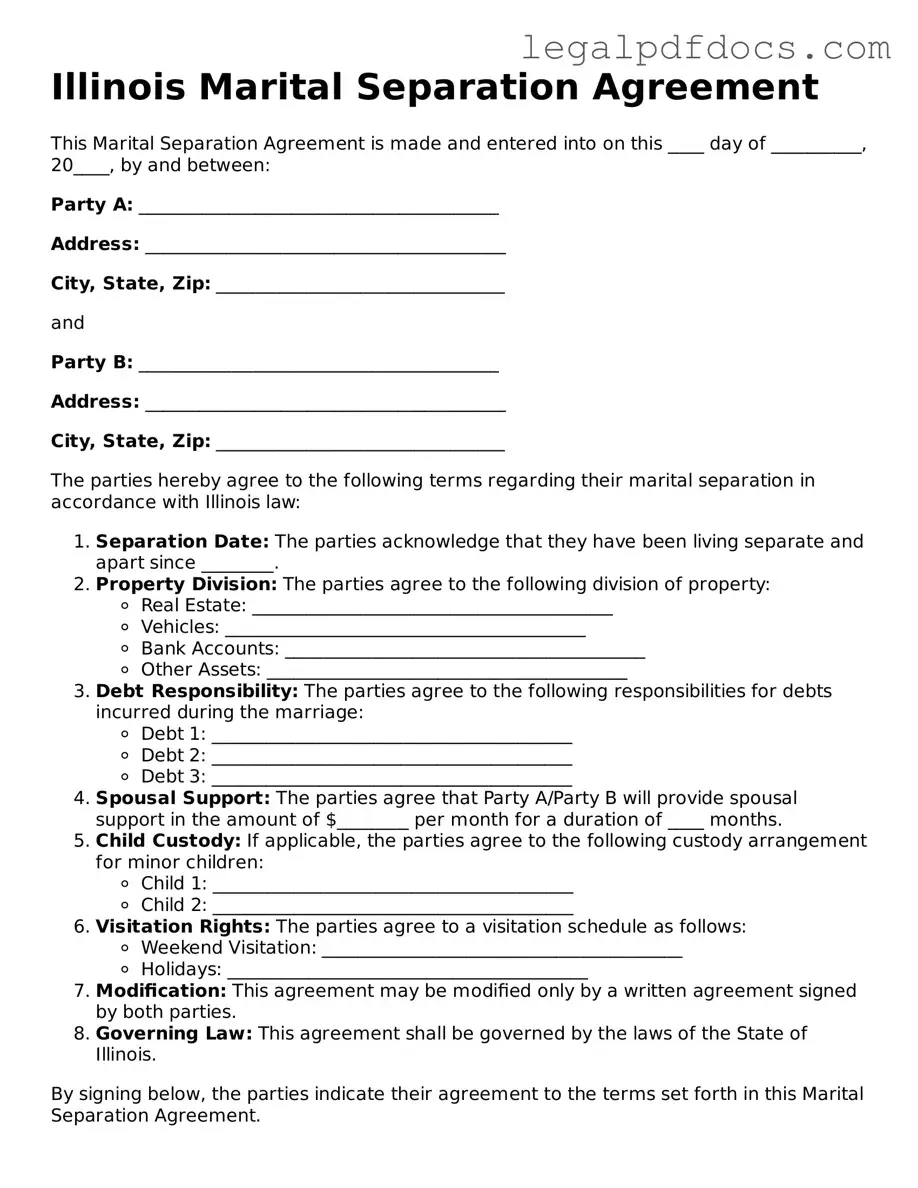Official Marital Separation Agreement Form for Illinois
A Marital Separation Agreement in Illinois is a legal document that outlines the terms of a couple's separation, addressing issues such as asset division, child custody, and support obligations. This agreement serves as a crucial step for couples looking to formalize their separation while minimizing conflict. To ensure your rights are protected, consider filling out the form by clicking the button below.
Open Marital Separation Agreement Editor Here
